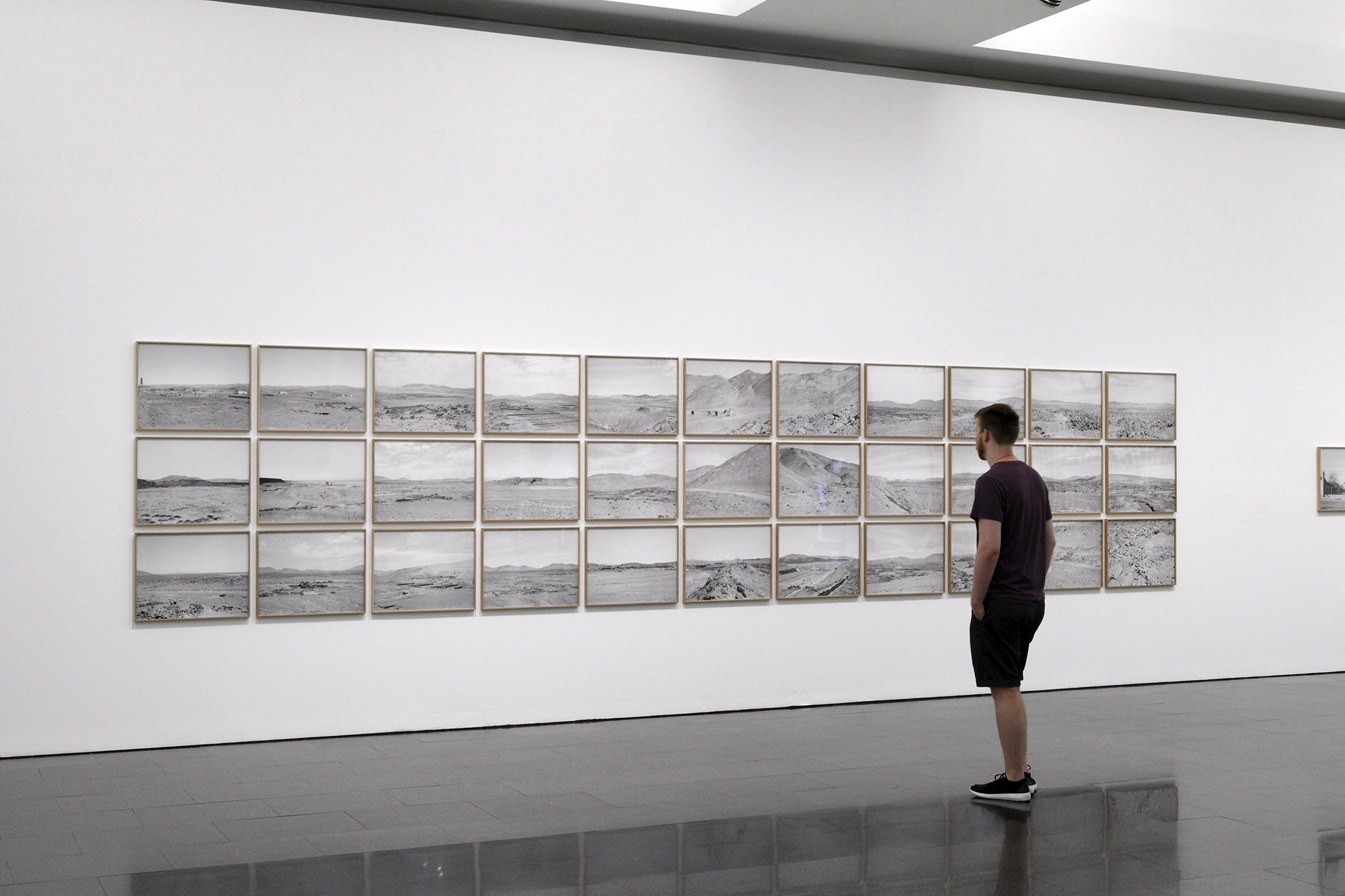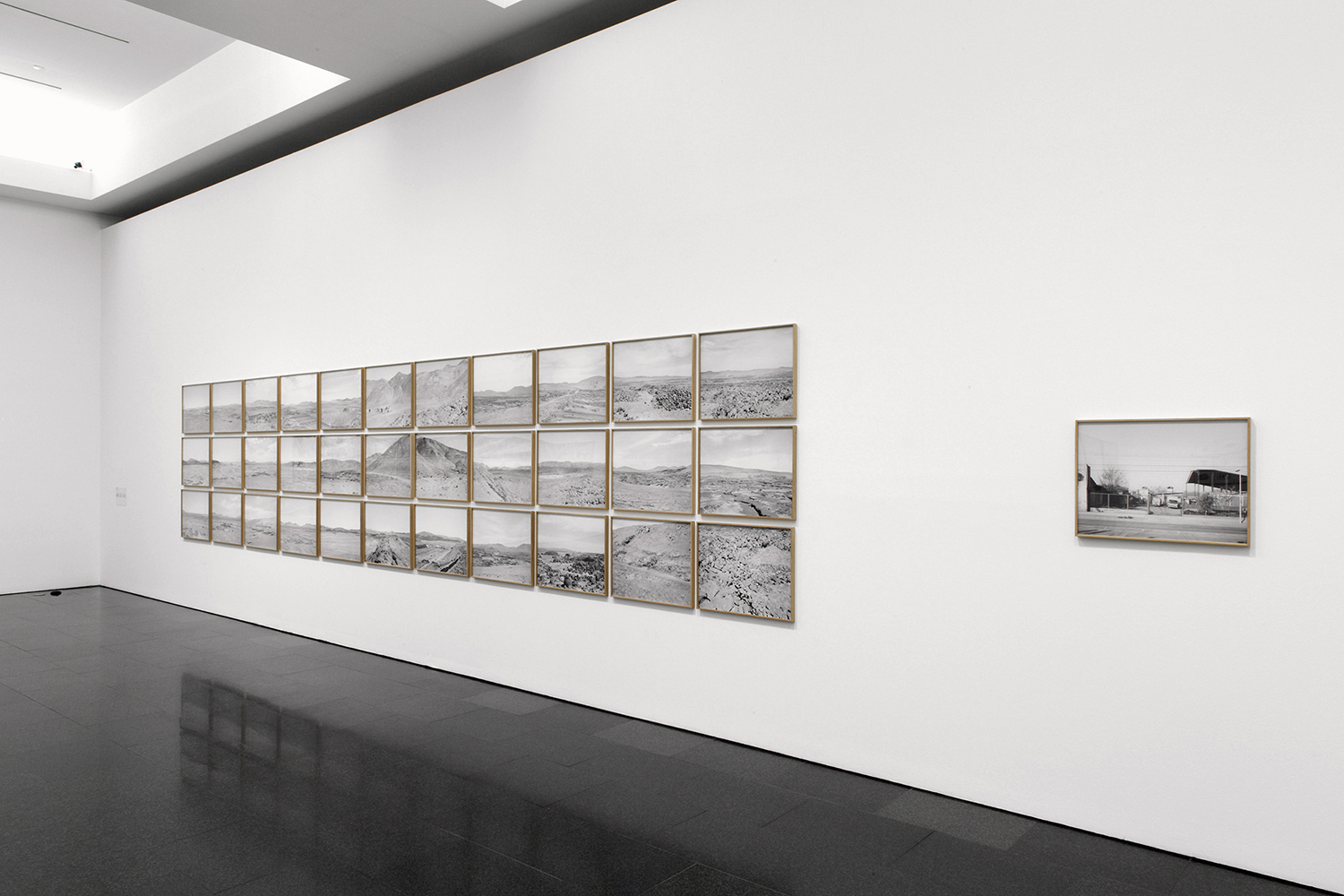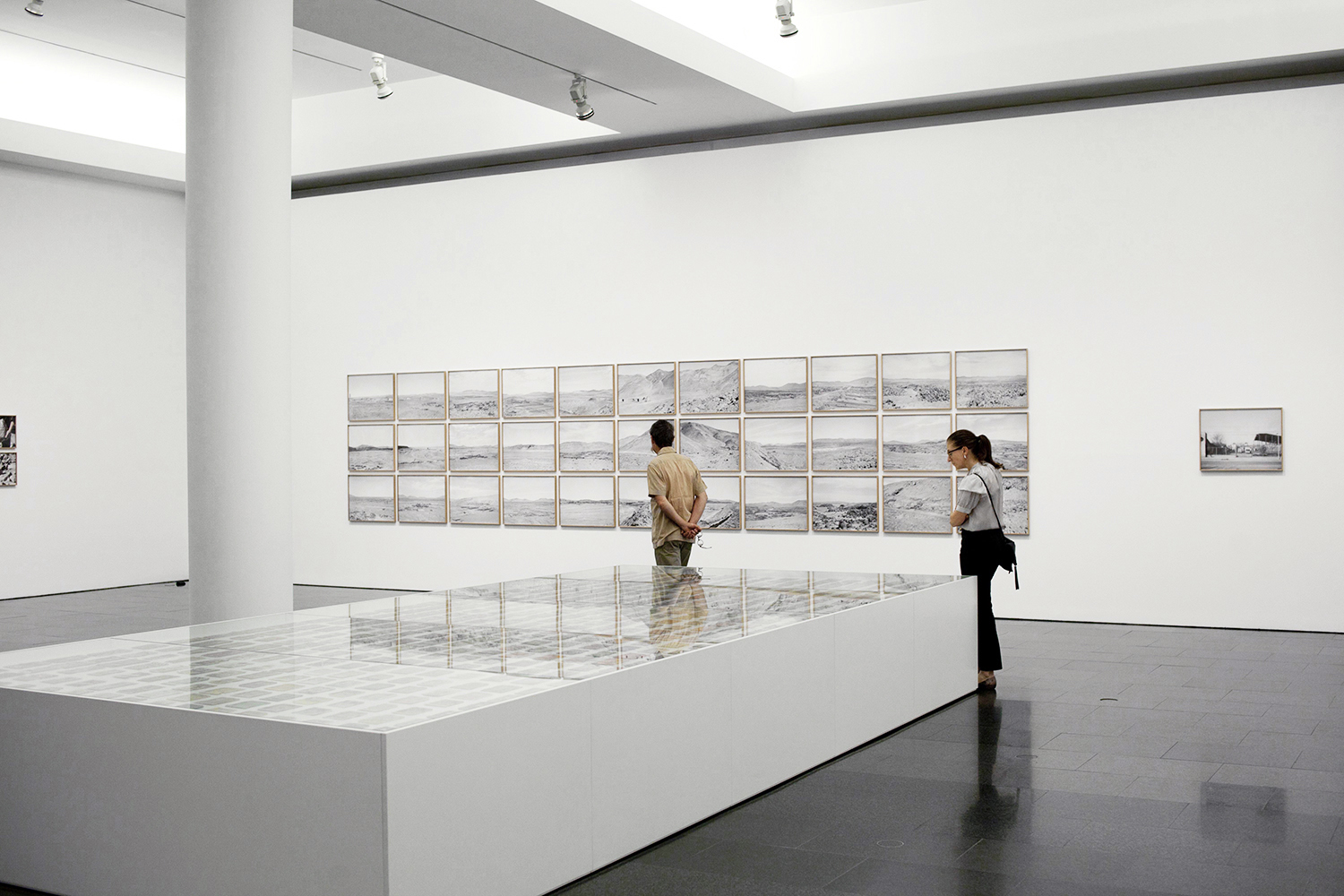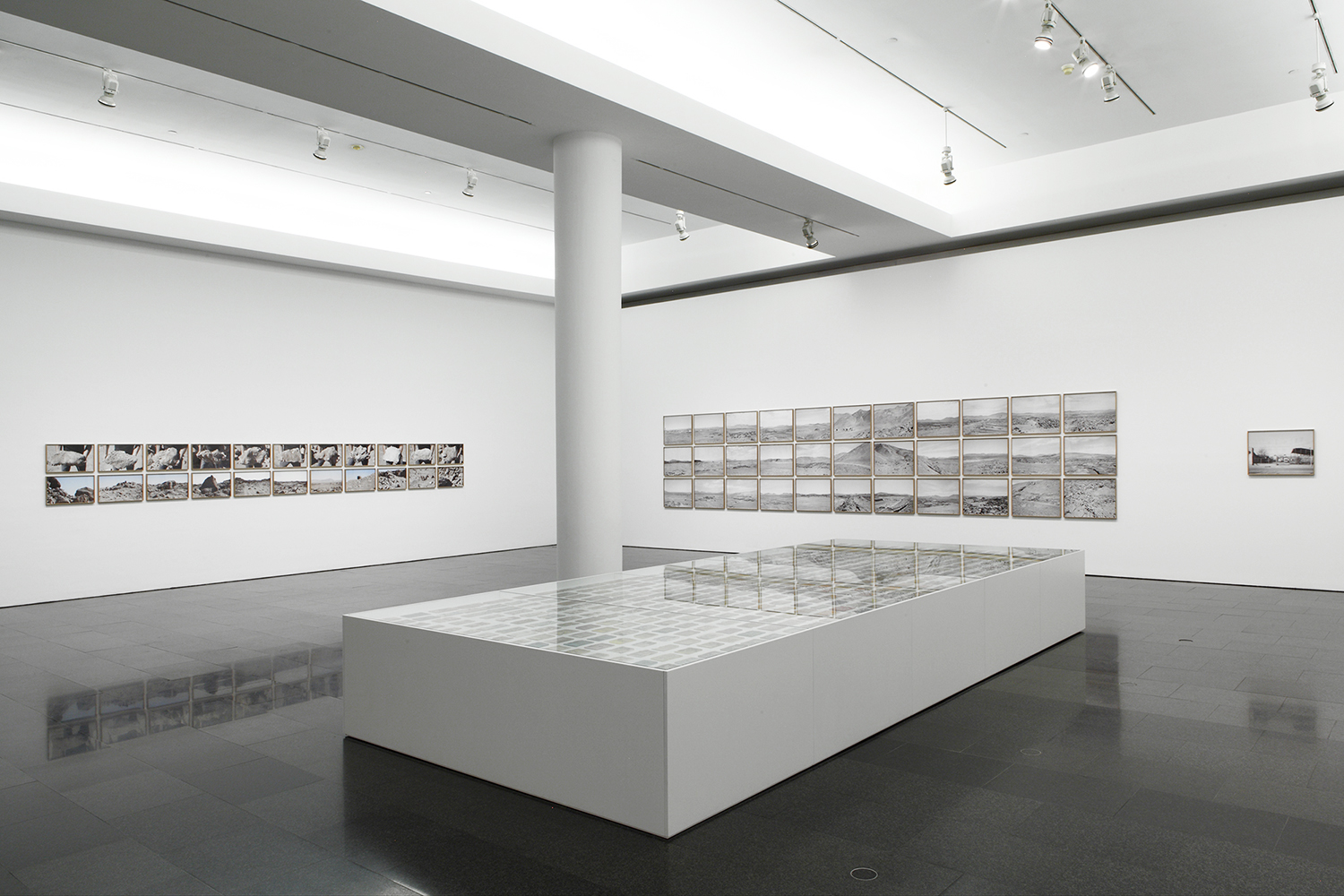© XAVIER RIBAS - Nitrate_Desert Trails (2014) 34 Pigment prints on Harman Baryta paper 49 x 63 cm each. Ed of 3+1ap

Desert Trails. Installation MACBA [Installation photograph: Marc Roig]
Desert Trails is a grid of 33 photographs of the Atacama Desert taken mostly from the vantage points of slag heaps of abandoned nitrate works. The photographs show the disrupted surfaces of the desert around abandoned industrial sites, towns and ore fields. Technically and aesthetically, these images emulate late 19th and early 20th century landscape photographs of nitrate works, produced as record of investment by the nitrate producers themselves, or for propaganda purposes. Those historical photographs and photographic albums are now held in national libraries, archives and museums. They have become the official visual record of the nitrate industry.
One such albums is Salitreras de Tarapacá (1889), by Louis Boudat, made on the occasion of the first "combination" of nitrate producers, a syndicate organized to regulate production and maintain the price of Chilean nitrate on world markets. Salitreras de Tarapacá documents the most important nitrate works of the time, providing information about their directors, traders and managers, as well as details of their production, machinery and work force. The album is a family portrait of the nitrate producers. It was put together at a time of maifested clash of interests with the Chilean state. Salitreras de Tarapacá is, therefor, a portrait of ownership embedded with the rhetorics of colonial capitalism: large open views of industrial production and investment, a consolidated force of foreign producers, and a wasted, desolate landscape put to work.
The ruins, the slag heaps and the mounds of rejected stone pilled up in the desert are the most distinctive elements in the landscape today. “The industrial structures of mining – writes Louise Purbrick – will always be abandoned. Dereliction cannot be avoided. When the mined material runs low, is too costly to extract or is no longer considered of value, the architecture of mining begins to empty of activity and soon stands as a monument of disuse. The ruins of the future are ever present.” The slag heaps of mining are topographic accidents that offer a blunt image of disappeared labour and of capitalist accumulation. They were made by the movement and the energy of the body of the worker, with the help of simple tools, like a pick and a shovel, shifting stone and refuse from one place to another. The mounds themselves, as Michael Taussig writes in My Cocaine Museum, “are bodies made by hand [...] a miraculous glimpse into the shaping of nature by the human hand, a monument to man's domination over nature through his domination over others, an archive of national history.” The mounds of stone and refuse visible in this landscape today, may provide a restitution of the absent body of the worker, barely visible in the old photographs.
The Atacama desert was the foundational landscape of the modern Chilean labour movement, and the site of the traumatic events of 1907 in Iquique, where the Chilean army, at the time protecting foreign interests, killed hundreds of striking workers in the School of Santa María. Salvador Allende’s government (1970-1973), put in place a policy to commemorate the history of struggle and resistance against foreign capitalists held in this landscape by the nitrate workers. After the military coup of Augusto Pinochet, however, this policy was reversed and the abandoned nitrate towns, cemeteries and slag heaps became targets for firing practice for the Chilean Air Force. It was an act of premeditated violence against a landscape associated with the memory of the labour movement and Allende's attempt to recover that memory, for example, in the abandoned nitrate town of Chacabuco, declared a heritage site in 1971, but used by Pinochet as a detention camp for political prisoners.
The photograph outside the grid operates as a visual caption. It represents the former site of the Unión de Trabajadores Ferroviarios Consejo de Santiago, more than a thousand miles south of Atacama, where on the 21st of December 1924 a large crowd paid last tributes to the body of Luis Emilio Recabarren, the founding figure of the Chilean labour movement, and founder of the Socialist Workers Party (POS) in the nitrate town of Cholita, Atacama, in 1912.

Desert Trails # 1 to 34
---



Desert Trails. Installation MACBA [Installation photograph: Marc Roig]